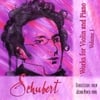Over the years I’ve been asked more than a few times if a young student should learn the piano as well as other musical instruments, or just piano, or just other instruments. I believe strongly that a completely inexperienced novice should start out with just one instrument at first (especially if they are younger than about 8 or 9). So I usually answer that the potential little musician should pursue whichever instrument fascinates them the most. Hopefully that initial fascination will (over time) slowly morph into a desire to begin a real “relationship” with the instrument, one which allows them to experience true and meaningful gratification from general musical improvement on that particular instrument.
The new music student should spend some time on one instrument to establish a good foothold on the basics of music (rhythm, pulse, note-reading, dynamics, basic technique, phrasing, etc.) Usually this takes at least a year, but the appropriate amount of time varies among students due to differing abilities and maturity levels. After they feel comfortably acclimated to music study, the student can think about learning another instrument. Students should pursue more than one instrument if they so desire, provided they can meet some minimal conditions:
1) the student can properly prepare lesson or rehearsal responsibilities set by the private teacher/band/orchestra, and
2) the lessons (and instruments) can be afforded comfortably by the student’s family.
There’s nothing worse than pushing a kid too hard so that the money investment in multiple instrumental study seems “worth it”. No offense intended here but I have to say that parents can be really bad judges of this sometimes: If you need little Johnny to sound like Joshua Redman after six months of saxophone lessons because you’re going broke from the combined fees from sax, drum, and piano lessons, chill out and drop an instrument or two. Not everybody can be Mike Oldfield. (Besides, it’s better to accomplish good training on one or two instruments rather than be a total hack on five!)
Sometimes parents ask me which instrument (or kind of instrument) would be good to study alongside piano. I can’t speak for every instrument because I don’t play them all, but I do think that an especially effective possibility is to choose an instrument that contrasts with how the piano makes sound. In other words, the instrument should be non-percussive and be able to produce sustained tones that can vary dynamically over time (this would include all the wind instruments, string instruments, and brass instruments). Learning how to use a wide variety of fluid motions to make sound (the breath in wind and brass instruments, the bow gestures in string instruments, the use of arm weight in piano) can help a student’s music making immensely. (Yes, this sounds a lot like the Feldenkrais Method, which teaches how better awareness of physical movements can improve our activities and experiences.) For example, playing a nicely rounded phrase on a wind instrument can help a musician play more musically at the piano, because awareness of the “natural” musical flow from the breath can affect how one hears and plays the phrase on the piano. The weaknesses I hear in most piano students when attempting to phrase smoothly are “bumpiness” and uncoordinated physical gesture. Generating better musicality at the piano can be helped by finding out about other ways of making sound and then “projecting” those ideas to the movements used at the piano. (I really like to use analogies of various instrumental sounds or gestures in my piano teaching because it can be rather effective with imaginative students.)
So, some examples of good instruments to pair with the piano would be, in no particular order: flute, trumpet, clarinet, viola…you get the idea. (By the way, I played trumpet and piano when I was a pre-teen. I tried guitar but utterly failed!)
Now this doesn’t mean that it would be worse to have a piano student learn the drums or guitar, or another percussive or plucked type of instrument. By all means, if that is what the student really wants to try then go for it. But I do think that learning a wide variety of ways to make sound can be a truly stimulating discovery in musical study.
I realize that other teachers and musicians (and also parents whose kids study multiple instruments) may have a different outlook on this topic than myself, so these people should feel free to express alternative views through the comment option if they think that could be helpful.
This is the first installment on the topic of varied instrumental study (hence the “Part 1” in the title). My next post on this topic will focus on the benefits of piano study versus other instruments.
Tuesday, May 29, 2007
Studying piano with other instruments (Part 1)
Subscribe to:
Post Comments (Atom)








0 comments:
Post a Comment